Documents reveal long-term repair inaction on Kuranda's Barron River Bridge
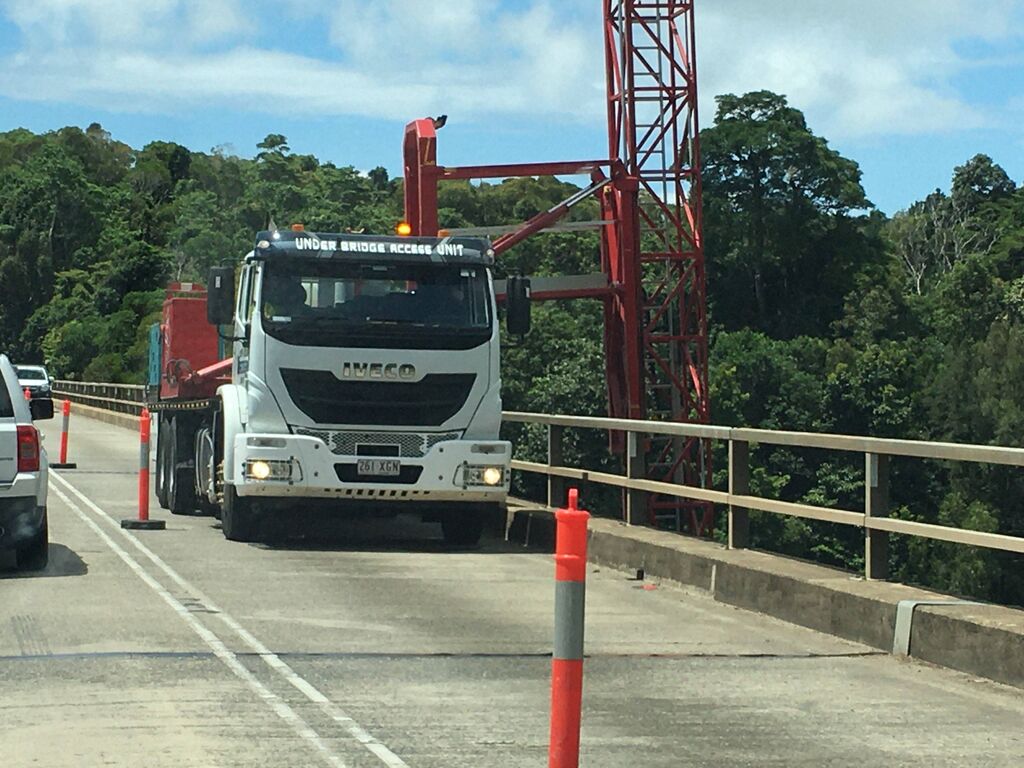
Repeated recommendations to repair corroding parts of the Barron River Bridge at Kuranda have been ignored since 2015.
Safety and engineering reports – obtained by Tropic Now under the Queensland Government’s Right to Information legislation – list a series of structural deterioration issues.
The reports also frequently highlight continued observations that advised repairs have not been carried out.
Late last year, the bridge was closed to all but one lane and a load limit imposed.
After months of secrecy, the department of Transport and Main Roads (TMR) has now revealed emergency repairs are being carried out in cracked steel welds and it’s spending more than $2-million on a study into whether the ageing structure needs to be replaced.
TMR documents dated from 2015 to 2020 give some insight into the issues that could have contributed to the state the bridge is in now and what it will take to save the ageing structure.
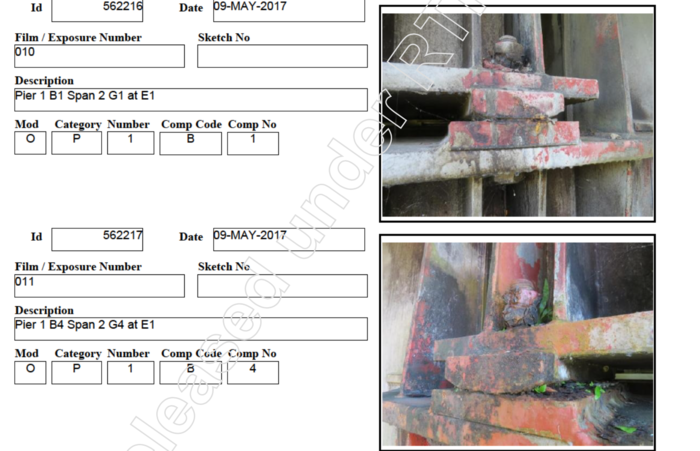
BEARINGS ARE SHOT
In one inspection more than five years ago, engineers recommended replacing nuts and bolts on fixed and rocker bearings as well as jacking up the structure to replace entire expansion joint bearings.
They’re parts that allow movement of the bridge.
The rocker bearings displayed excessive rotation and some had rotated ‘to their tolerance limits’, which a steward’s report from 2018 said could have contributed to deterioration of the nuts and bolts.
“The likely increased friction in the rocker bearings is of concern as it leads to unpredictable behaviour, increased forces in the bridge that must be restrained by severely deteriorated restraining bolts and tall pier bearings,” it reads.
“These risks should be addressed in the short-term potentially by greasing the rocker bearings and safely restraining potential longitudinal movement by, for example, replacing critical severely deteriorated bolts and nuts or by the addition of restraint blocks.”
Reports from 2017, 2018 and 2020 all referred back to the December 2015 level 3 inspection, again recommending repair or replacement of corroded parts.
Despite the 2015 report clearly stating that the works should be done as soon as possible and in a timeframe ‘no later than two years,’ the remedial actions were yet to be carried out.
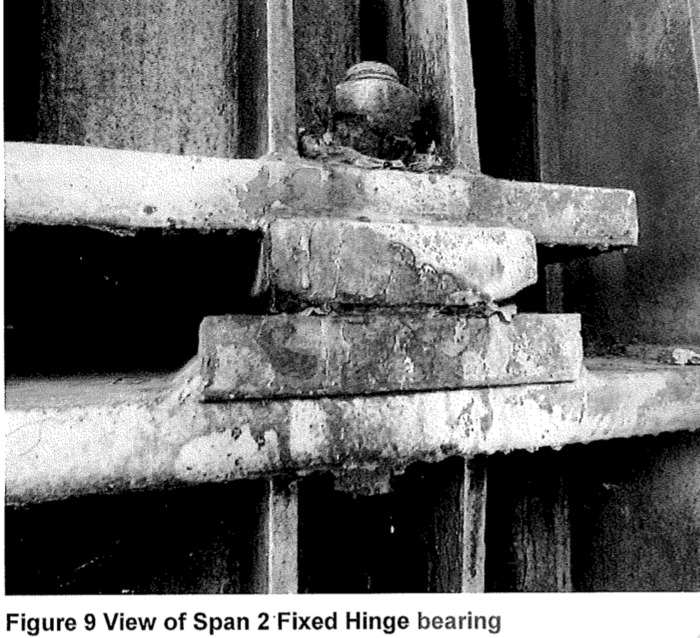
Dr Kumaran Suntharavadivel, a lecturer in civil engineering at CQU, told Tropic Now the failure to repair bearings didn't necesarily create the current priority problem of cracks in steel welds, but it could certainly have contributed.
"The cracks can be caused by excessive loads and also the bearings," he said.
"The bearings will transfer the load from the top to bottom, so from the deck part to the columns or piers because the deck is not designed to carry lateral movement.
"So if the bearing doesn’t work properly the lateral movement will be restricted which will give pressure on the deck which can create cracking.
"But just how much it has contributed we can't be certain.
"Reducing to a single lane down the middle, as they have done, will help spread the load."
The report carried out in November 2020 described the bridge’s state as ‘poor’ with cracking in steel welds of up to 5mm in length and almost 1mm in depth at splice joints, cross girder-girder interfaces and at stiffeners.
There was also significant corrosion in steel welds, hinge pins and plates as well as the bearings.
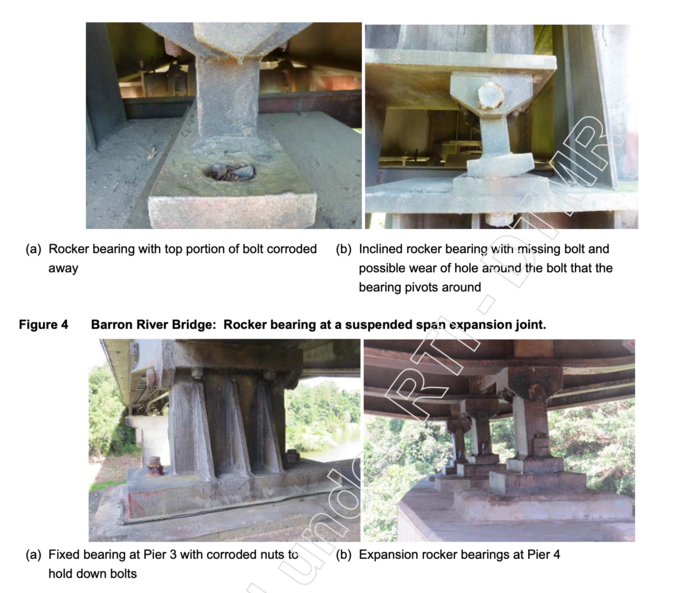
OTHER RECENT ISSUES
The 256-metre-long Barron River Bridge, built in 1963, is on a strategic route that connects Kuranda and the Atherton Tablelands to Cairns.
According to the reports, it contains 45.7-metre spans that are more than three times longer than the average span length for bridges built in that era, ‘making it more susceptible to these longer heavier loads and hence is operating at reduced margins compared to Australian Standards.’
The 2018 report said the bridge serviced more than 1000 heavy vehicles per day, with a load limit of 50.5 tonnes.
It also noted that when the bridge was built, it was only designed to cope with a 33-tonne load limit but in 1967, it was retrofitted with so-called ‘Macalloy bars’ to provide increased structural strength.
However, by 2018, the Macalloy bars were seriously deteriorating, and the structure was given a ‘relatively high’ risk rating which led to the bars being replaced the following year.
The short-term risk assessment reads, “The retrofit is now compromised through both pitting corrosion and wear of the stressing bars vibrating against the girders raising concerns of brittle failure in the bars.
"The unverified tier one assessment indicates that the girders and the headstock cantilevers are operating at margins less than current Australian standards for general access semi-trailers and the 50.5t 19m B-doubles/ truck and dogs that can currently access the route.”
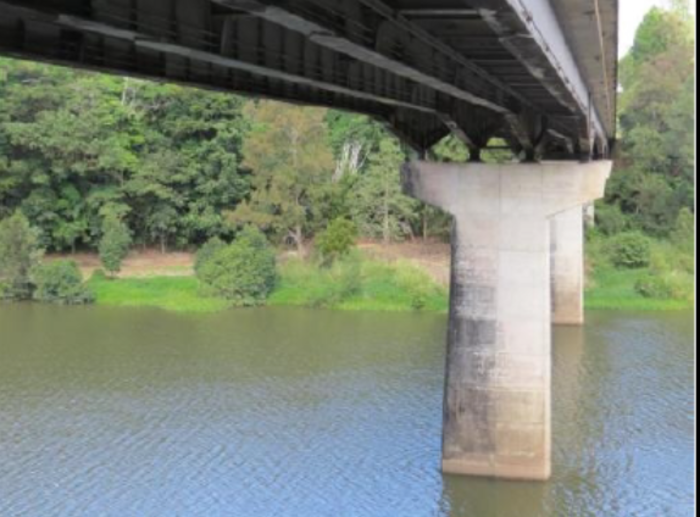
The risk assessment estimated a spend of $1060,800 was required in the short term.
Recommendations in 2018 included:
- Avoiding queues of traffic across the bridge where possible
- Excluding crowd loads
- Regulating Gross Mass Load vehicles (including 50t B-doubles and truck and dogs) to be the upper bound for vehicles accessing the bridge
- Implementing a communications plan to inform interested stakeholders, including the transport industry
- Removing, replacing and testing a sample of Macalloy bars exhibiting signs of wear within three months
- Restraining rocker bearing shoes and masonry plates in locations where the holding down bolts to the bearings have been compromised
- Establishing protocols necessary to close the bridge with zero notice
Tropic Now understands that while the Macalloy bars were replaced, no signs were erected to inform of any new load limits and the transport industry had not been communicated with.
A life expansion plan written in the same year said the current management strategy was to maintain the bridge for an expected life of at least 50 years ‘by investigating and managing current risks and taking steps to prevent further deterioration and reduce ongoing maintenance costs.’
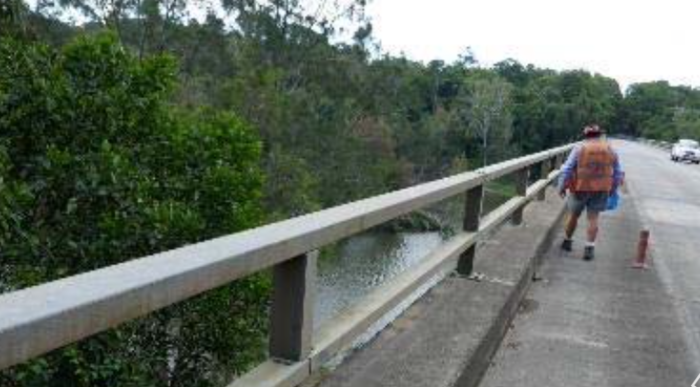
PEDESTRIAN RISK
There were also concerns about pedestrian access.
A 2017 report noted that four traffic bollards were missing and fog lines were getting harder to see.
Three years later, the 2020 report said that ‘all bollards at the pedestrian walkway are now missing, offering no protection or delineation for pedestrian traffic under normal operation.’
During that inspection the thoroughfare had been reduced to one lane. The report said pedestrian concerns should be considered before reopening to two lanes.


